Introduction to ArchiMate Modeling Language
- Posted by Muthukumar Dharmar
- Categories ArchiMate
- Date June 18, 2023
ArchiMate is a popular modeling language specifically designed for enterprise architecture. It provides a comprehensive framework for describing, analyzing, and visualizing different aspects of an organization’s structure, processes, systems, and strategies.
The primary goal of ArchiMate is to enable clear communication and understanding of complex enterprise architectures. It provides a standardized set of concepts, relationships, and notations that allow architects and stakeholders to represent and analyze various architectural domains, including business, application, and technology.
Understanding ArchiMate
ArchiMate was developed by The Open Group, a global consortium that focuses on promoting and enabling the adoption of open, vendor-neutral IT standards and certifications. It was first introduced in 2004 and has since gained widespread recognition and adoption across various industries. ArchiMate serves as a common language that enables architects, business stakeholders, and IT professionals to communicate and collaborate effectively, ensuring alignment between business goals and IT strategies.
The ArchiMate Core Framework
The ArchiMate Core Framework is a framework of nine cells used to classify elements of the ArchiMate core language. It is made up of three aspects and three layers.
Core layers:
a. Business Layer: Describes the organization’s structure, processes, and goals.
b. Application Layer: Represents the applications and software systems that support the business processes.
c. Technology Layer: Focuses on the hardware, software, and infrastructure required to support the applications.
Aspects:
The Active Structure Aspect, which represents the structural elements (the business actors, application components, and devices that display actual behavior; i.e., the “subjects” of activity).
The Behavior Aspect, which represents the behavior (processes, functions, events, and services) performed by the actors. Structural elements are assigned to behavioral elements, to show who or what displays the behavior.
The Passive Structure Aspect, which represents the objects on which behavior is performed. These are usually information objects in the Business Layer and data objects in the Application Layer, but they may also be used to represent physical objects.
Relationship Types: ArchiMate defines various relationship types to depict the dependencies and connections between elements. Examples include composition, aggregation, association, specialization, and realization.

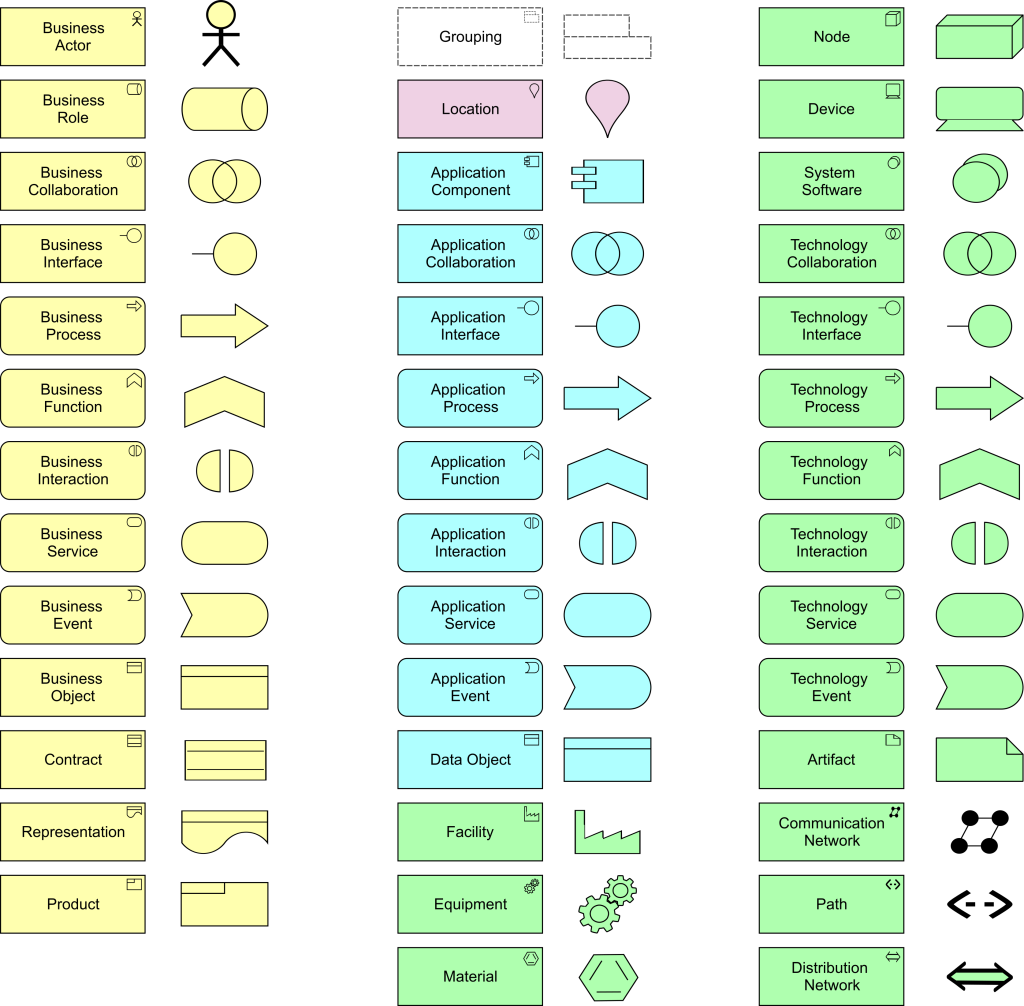
One of the strengths of ArchiMate lies in its ability to show the dependencies and impact between elements across different layers. For example, it allows you to illustrate how a business process in the business layer is supported by applications in the application layer and the technology infrastructure in the technology layer.
Business processes, business actors, information objects, organizational units, roles, goals, principles, requirements
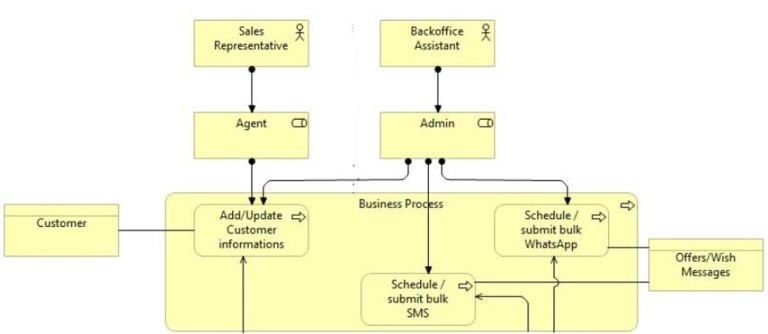
Applications, data stores, interfaces, events, services, etc.,
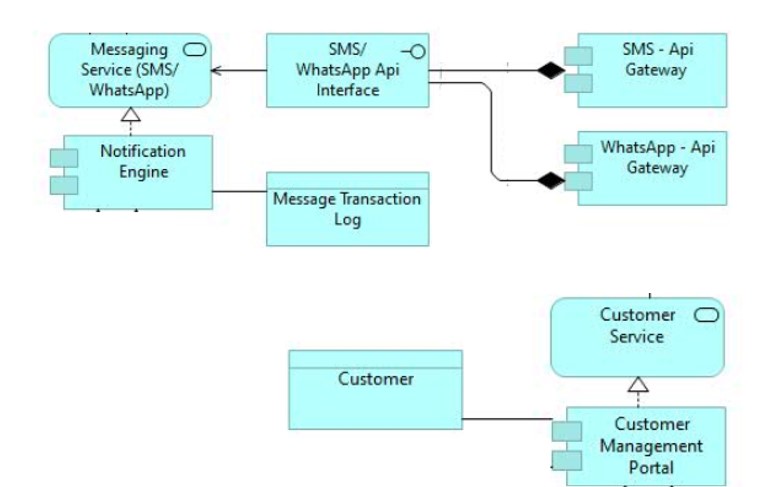
Hardware, software, systems, networks, devices, connectors, etc.,
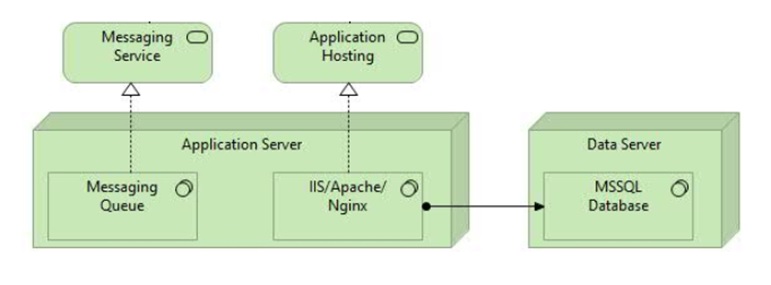
The ArchiMate Full Framework is an extension of the ArchiMate Core Framework that adds number of layers and aspects to the core Framework.
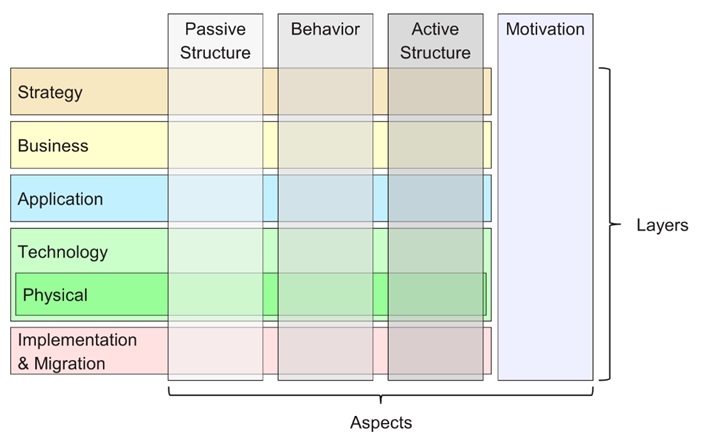
- The strategy elements are motivations introduced to model the strategic direction and choices of an enterprise.
- Motivation elements are used to model the, or reasons, that guide the design or change of an Enterprise Architecture.
- Physical aspect captures the physical components of an architecture, such as its facilities, equipment, and materials.
- The implementation and migration elements support the implementation and migration of architectures
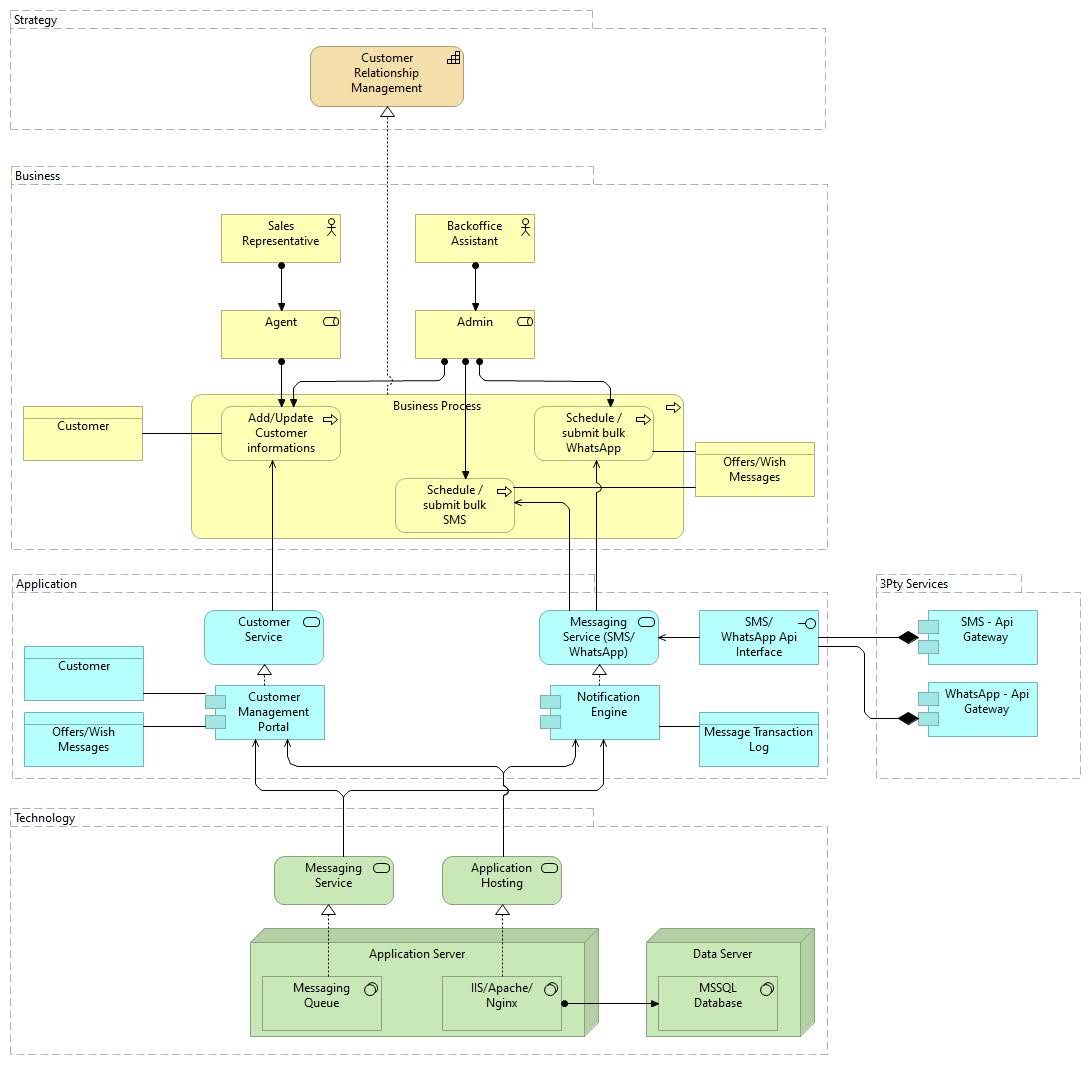
Conceptual Architecture View - Example from Open Group
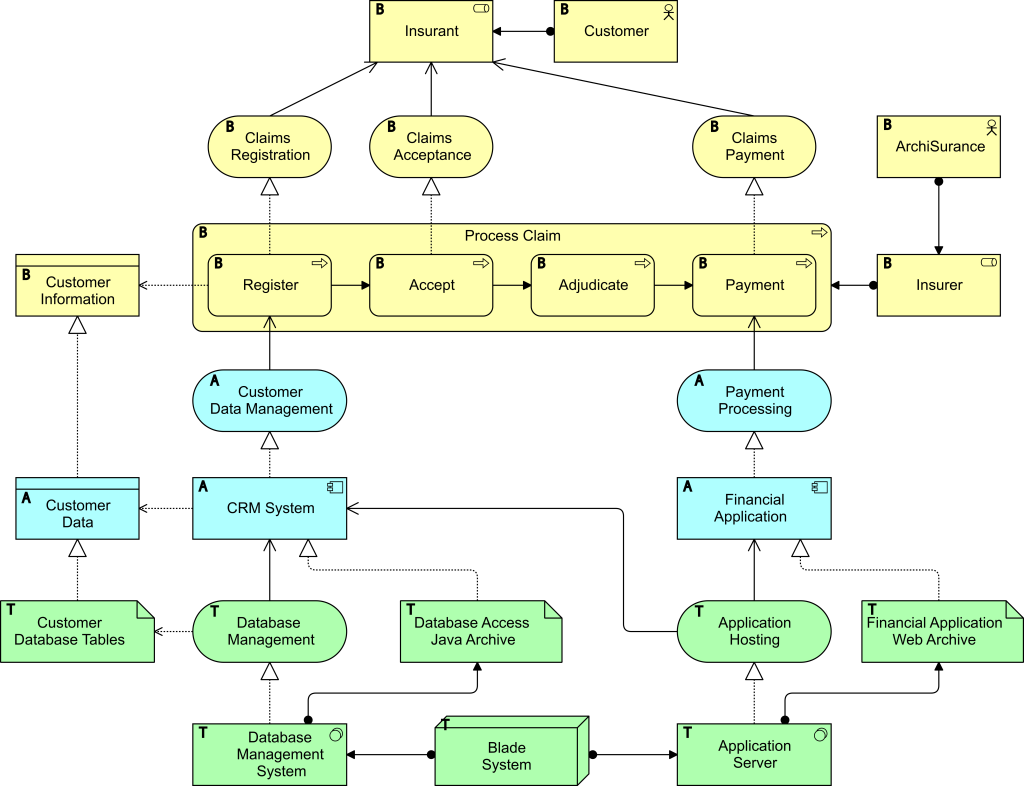
Benefits of ArchiMate:
Improved Communication and Collaboration: By providing a common language and visual representations, ArchiMate enhances communication and collaboration among stakeholders. It allows business and IT professionals to understand and discuss complex architecture concepts more effectively, leading to better decision-making and alignment of objectives.
Alignment and Integration: ArchiMate helps identify the relationships and dependencies between different architectural domains. It allows architects to align business processes, applications, and technologies, ensuring a coherent and integrated architecture.
Analysis and Decision-making: ArchiMate supports analysis and decision-making by providing a structured framework to capture and represent the enterprise architecture. It allows architects to evaluate the impact of changes, identify potential risks, and make informed decisions.
Visualization: ArchiMate’s graphical notation enables the creation of visual models and diagrams that are easy to understand. Visual representations help stakeholders grasp the architecture quickly, facilitating discussions, and aiding in decision-making.
Conclusion
ArchiMate serves as a valuable tool for Enterprise Architects, enabling them to understand, document, and communicate complex enterprise architectures effectively. By providing a standard language for modeling, ArchiMate facilitates collaboration, decision-making, and alignment of business and IT strategies. As organizations continue to navigate the complexities of the digital age, ArchiMate offers a robust framework for achieving efficient and optimized enterprise architectures.
References
Documentation:
https://online.anyflip.com/nnfi/rdht/mobile/index.html
https://pubs.opengroup.org/architecture/archimate32-doc/index.html
Opensource Tool:
https://www.archimatetool.com/
https://www.archimatetool.com/resources/
Over 17 yrs of experience in the IT industry.
Skill Set: Angular, RxJS Reactive Programming, AspNet WebApi, WCF, WPF, Azure, etc.,

